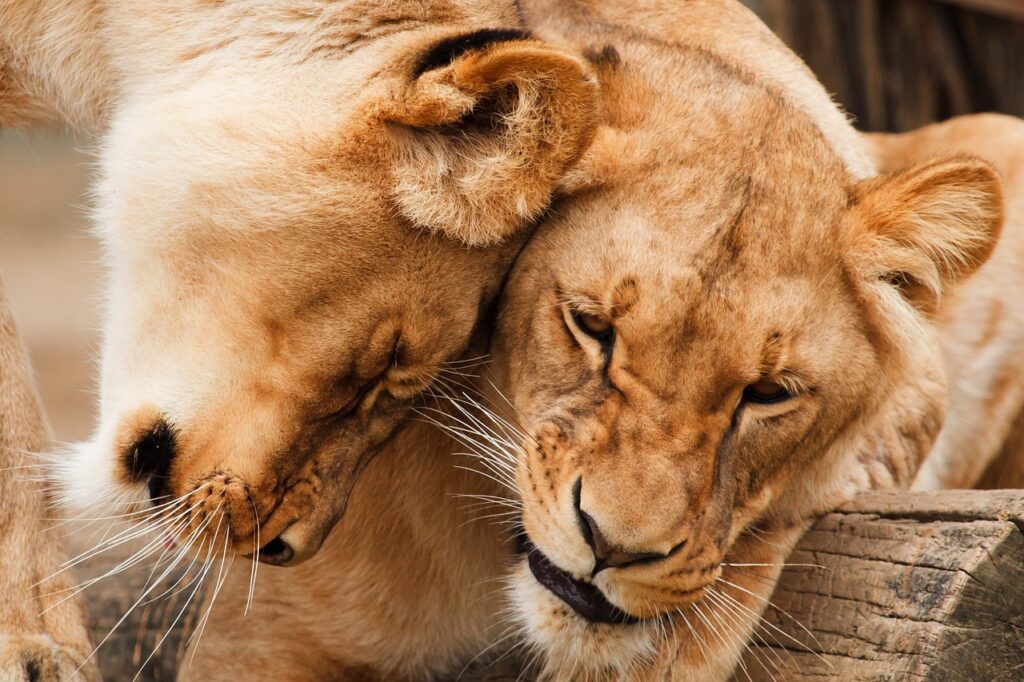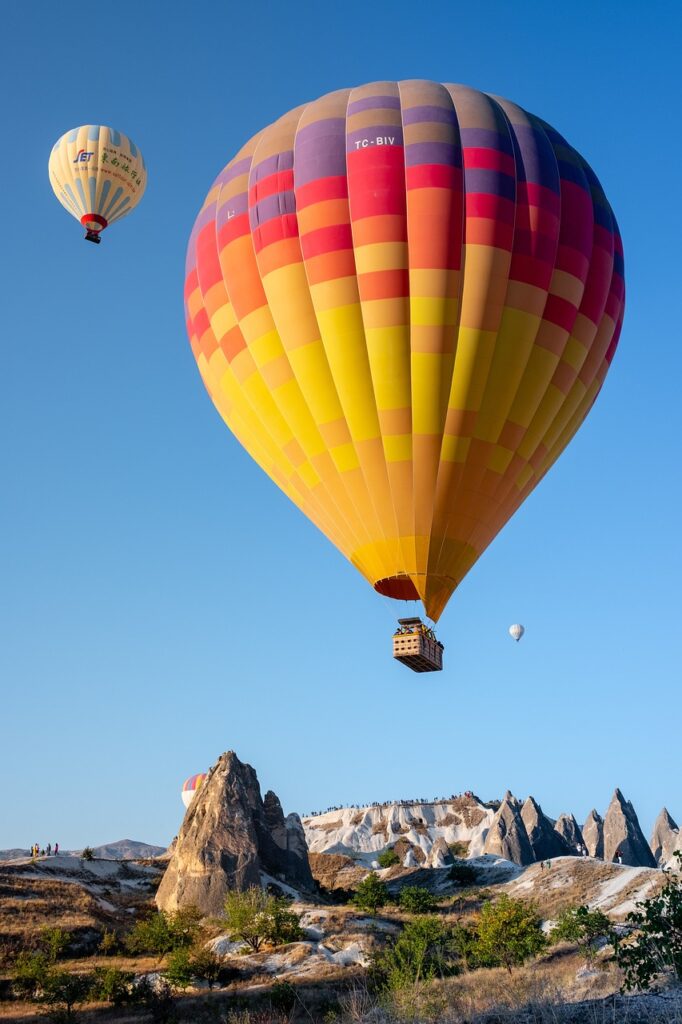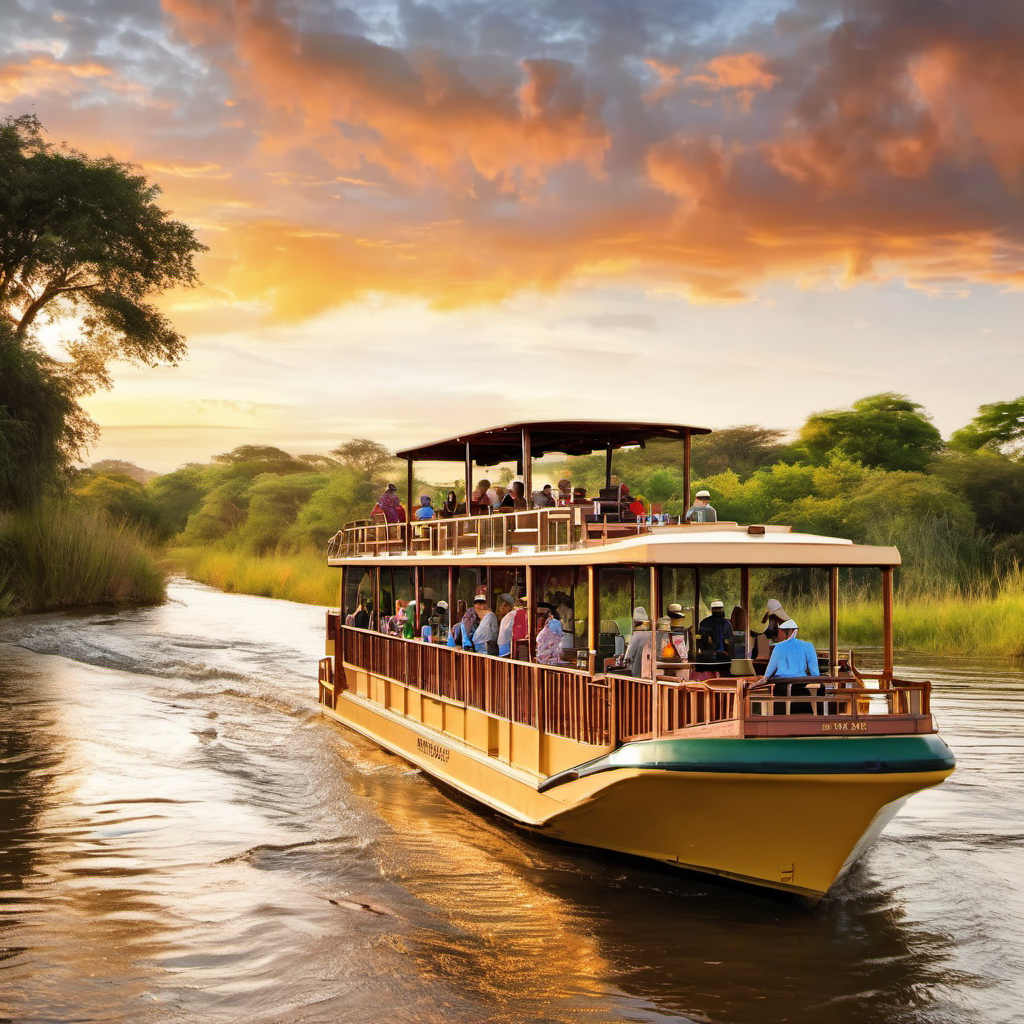
Safari Spectacular: Close Encounters with Wildlife:
Embarking on a safari is like stepping into a living diorama, where the vibrancy of the wild unfolds before your eyes. From the rhythmic drumbeats of the African plains to the lush, verdant jungles that whisper the tales of nature, a safari adventure offers an immersive experience into the heart of the wild. In this extensive guide, we will navigate through the thrilling encounters and essential tips that make a safari unforgettable, including a touch of history, top activities, travel tips, and even a splash of humor to keep your journey light and enjoyable.
A Little History about Safari:
The term “safari” stems from the Swahili word for “journey,” originally borrowed from the Arabic “safar” meaning a journey or trip. The concept evolved in the 19th century during the colonial period when explorers and big-game hunters from the western world ventured into East Africa. Thankfully, today’s safari is more about preservation than predation, focusing on conservation and the opportunity to witness wildlife in their natural habitats.
Let’s delve deeper into the captivating world of safaris and the intricate ecosystems that make wildlife encounters so spectacular.
Understanding Safaris:
A safari is much more than just a trip; it’s an expedition into the heart of nature, where human visitors are mere observers of ancient animal rituals and survival strategies. Modern safaris have evolved significantly from their origins. Originally adventures for big-game hunters, they are now conservation-driven experiences that educate visitors and support local communities and ecosystems.
Types of Safaris:
- Classic Safari: This typically involves game drives in vehicles, allowing for safe observation of wildlife from a distance. This type is most common in East Africa.
- Walking Safari: Offers a ground-level view of the wilderness. Led by experienced guides, these safaris provide an intimate understanding of the flora and fauna, from insects to larger mammals.
- Canoe and Boat Safaris: Popular in places like the Okavango Delta and the Zambe
zi River, these safaris allow you to explore aquatic ecosystems and observe animals from the water, offering a quieter, less intrusive way to watch wildlife.
- Birding Safari: Tailored for bird enthusiasts, these safaris focus on the diverse avian species in an area, often involving quieter, more patient observations.
- Photographic Safari: These are designed with photographers in mind, providing opportunities to capture wildlife in natural habitats at optimal times for light and activity.
Wildlife Encounters:
Wildlife encounters on a safari are profound and varied, depending on the region, the ecosystem, and the time of year. Here’s what makes these encounters so unique and important:
The Big Five:
Originally coined as a hunting term, the “Big Five” refers to five of Africa’s greatest wild animals: lion, leopard, rhinoceros, elephant, and Cape buffalo. These are among the most sought-after and photographed animals on safaris. However, seeing these magnificent creatures in their natural habitat also highlights the critical conservation efforts needed to preserve their populations and environments.
Predators and Prey:
Observing the dynamics between predators and their prey is a gripping aspect of the safari experience. For instance, the strategic hunting techniques of lions contrast sharply with the defensive maneuvers of wildebeests during the Great Migration. Such encounters offer a raw look at the realities of nature, where survival is a constant battle.
Birdlife:
Africa’s birdlife is as diverse as its terrestrial wildlife. From the iconic African fish eagle to the tiny sunbirds, bird watching adds a colorful and melodious layer to the safari experience. Observing these birds, many of which are endemic to specific areas, adds depth to the understanding of the ecological diversity of these regions.
Conservation Efforts:
Many safari tours now incorporate educational components about conservation efforts. This might include visits to sanctuaries for endangered species, talks on the impact of climate change on wildlife, or participation in wildlife research activities. Such experiences highlight the challenges faced by conservationists and the role tourists can play in supporting sustainable practices.
Importance of Wildlife Safaris:
Safaris play a critical role in conservation by funding wildlife reserves and providing employment to local communities. They help raise awareness about the importance of preserving natural habitats and the threats many species face from poaching and habitat loss. For many visitors, a safari is a transformative experience that increases their appreciation for wildlife conservation and encourages sustainable travel practices.
Moreover, by integrating local communities into the safari experience, either through cultural tours or community-run lodges, safaris help ensure that the benefits of wildlife tourism also support the people who live alongside these magnificent creatures.
Overall, a safari offers a profound connection to the natural world, an adventure unlike any other, where each encounter with wildlife is a reminder of the beauty and fragility of life on Earth.
Whether it’s the thrill of spotting a leopard lounging in a tree or the serene beauty of a sunset over the savannah, a safari leaves an indelible mark on the hearts of those who experience it.

Top 15 Things to Do on a Safari in 2024:
The variety of experiences available on a safari continues to expand, catering to all interests from adventure seekers to those looking for tranquility amidst nature. Here’s a detailed look at the top 15 things to do on a safari in 2024:
1. Witness the Great Migration:
The variety of experiences available on a safari continues to expand, catering to all interests from adventure seekers to those looking for tranquility amidst nature. Here’s a detailed look at the top 15 things to do on a safari in 2024:
2. Hot Air Balloon Rides:
Take to the skies at dawn in a hot air balloon for unparalleled views of the sprawling wilderness below. This peaceful flight lets you glide over herds of animals and witness the sunrise illuminating the vast savannah—an absolutely serene and breathtaking experience.

3. Night Drives:
Explore the African bush after dark when many creatures are most active. Night drives reveal the elusive nocturnal wildlife, including leopards, hyenas, and possibly even the rare sight of a lion hunt. It’s an eerie yet thrilling way to see the other side of the savannah under the cover of night.
4. Walking Safaris:
Step out of the vehicle and onto the ground with a guided walking safari. Led by experienced rangers, you’ll learn about tracking animals, identifying plants, and understanding the ecosystem at a microlevel. It’s an intimate way to connect with the environment and see details you’d miss from a vehicle.
5. Bird Watching:
Africa’s birdlife is incredibly diverse. A birding safari can help you spot everything from the common ostrich, the world’s largest bird, to the dazzling malachite kingfisher. These safaris are often quieter and more reflective, offering a chance to appreciate the smaller wonders of the bush.
6. Visit a Maasai Village:
Cultural tours provide insights into the lives of the Maasai people, known for their distinctive customs and dress. A visit can include traditional dances, a tour of the village, and storytelling, offering a profound cultural exchange and deeper understanding of the local heritage.
7. Photographic Safaris:
Tailored for photography enthusiasts, these safaris are conducted with special vehicles and expert guides who understand how to position you for the best shots. Whether you’re an amateur or a professional, these tours focus on capturing the spectacular scenes of the African wilderness.
8. Canoe Safaris:
Paddle through the calm waters of rivers like the Zambezi, observing wildlife from a unique vantage point. Canoe safaris offer a quiet approach to viewing animals, particularly birds and aquatic life, and provide a refreshing perspective on the landscape.
9. Luxury Camps:
Experience the wild in comfort and style. Luxury safari camps offer exquisite accommodations, fine dining, and amenities like private pools and spa treatments, all while being surrounded by nature. It’s the perfect blend of adventure and relaxation.
10. Conservation Tours:
Get involved in wildlife conservation efforts through interactive tours that might involve activities like rhino tracking or elephant conservation projects. These experiences are educational and rewarding, offering a hands-on approach to conservation.
11. Horseback Safaris:
Explore the savannah on horseback to approach wildlife in a non-threatening manner. Animals often react less fearfully to horses, allowing closer encounters. It’s an exhilarating way to experience the wild, with the winds of Africa brushing against you.
12. Cultural Tours:
Beyond the wildlife, delve into the rich history and archeology of areas like Olduvai Gorge or explore ancient rock art sites. These tours add a historical dimension to your safari, enriching your understanding of the continent’s past.
13. Bush Breakfasts and Dinners:
Enjoy a meal in the wilderness, often set up under a tree or by a river, with wildlife possibly roaming in the background. This is not just a meal; it’s an event, complete with bush chefs cooking over open fires and tables set under the African sky.
14. River Cruises:
A river cruise offers a leisurely way to see wildlife, especially in areas like Botswana’s Chobe River. Animals come to the water to drink and cool off, and viewing them from the safety and comfort of a boat is both serene and spectacular.

15. 4x4 Game Drives:
Navigate through diverse landscapes in a 4×4, guided by experienced drivers and trackers. This traditional safari style allows for extensive exploration and is ideal for encountering a broad range of wildlife, from the famed Big Five to the myriad smaller creatures that make up the ecosystem.
Each of these activities offers a unique way to experience the majesty of the African wilderness, making your safari adventure truly unforgettable. Whether you’re seeking thrills, knowledge, or tranquility, there’s something on
Things for Families to Do in Safari:
Safaris can be magical for children, providing them with educational and thrilling experiences. Family-friendly activities include junior ranger programs where kids can learn tracking skills, wildlife quizzes, and interactive cultural experiences. Many safari lodges cater to families with special activities aimed at young explorers, ensuring safety and fun for all ages.
Trending Best Places to Visit:
Exploring the best places for a safari can turn a simple vacation into a mesmerizing adventure. Let’s delve into some of the trending best places to visit for a safari in 2024, each offering unique experiences and unforgettable wildlife encounters.
1. Serengeti National Park, Tanzania:
Exploring the best places for a safari can turn a simple vacation into a mesmerizing adventure. Let’s delve into some of the trendiest places to visit for a safari in 2024, each offering unique experiences and unforgettable wildlife encounters.
2. Maasai Mara National Reserve, Kenya:
Adjacent to the Serengeti in Tanzania, the Maasai Mara offers a similar, albeit smaller-scale, environment and wildlife experience. It is particularly noted for its population of lions, leopards, and cheetahs, and the dramatic scenes during the river crossing of the Great Migration, featuring harrowing escapes from crocodile-infested waters. The reserve also provides opportunities to visit local Maasai communities, offering insights into the culture and traditions of the Maasai people.
3. Okavango Delta, Botswana:
The Okavango Delta is a unique wetland within the Kalahari Desert, providing a lush habitat for a diverse array of wildlife. This inland delta is known for its stunning landscapes that can be explored by mokoro (a traditional dugout canoe), providing close encounters with nature and wildlife like elephants, hippos, and a variety of water birds. The delta floods seasonally, creating a dynamic ecosystem that changes and shifts with the seasons, offering different experiences throughout the year.
4. Kruger National Park, South Africa:
One of Africa’s largest game reserves, Kruger National Park offers one of the most accessible and well-organized safari experiences. It is home to an impressive number of species, including the Big Five, and boasts a variety of ecosystems, from dense forests to arid savannas. Kruger is ideal for self-drive adventures as well as guided tours, and its well-developed infrastructure makes it a perfect safari destination for families and first-time safari-goers.
5. Ngorongoro Crater, Tanzania:
Ngorongoro Crater is the largest intact volcanic caldera in the world and serves as a natural enclosure for some of Africa’s densest populations of large animals. The crater floor offers excellent game viewing all year round, with virtually guaranteed sightings of the Big Five (lion, leopard, buffalo, elephant, and rhinoceros). The stunning landscapes and the backdrop of the crater walls provide a dramatic setting that is not only perfect for wildlife viewing but also breathtakingly beautiful.
6. Etosha National Park, Namibia:
Known for its salt pan so large it can be seen from space, Etosha National Park is centered around the arid Etosha Pan, a depression that sometimes holds water and attracts hundreds of thousands of birds. Around the pan, waterholes support a dense concentration of wildlife including endangered black rhinoceros and the endemic black-faced impala. The park’s open landscape affords spectacular panoramic views of the savanna and its wildlife, making it a photographer’s paradise.
7. South Luangwa National Park, Zambia:
Often referred to as one of the greatest wildlife sanctuaries in the world, South Luangwa offers some of the most intense and varied wildlife viewing opportunities. This park is the birthplace of the walking safari and is known for its high population of leopards and a wild, untouched jungle atmosphere. The Luangwa River, filled with hippos and crocodiles, provides life to a myriad of species, particularly during the dry season when animals flock to its banks.
8. Chobe National Park, Botswana:
Famous for its elephant population, Chobe National Park is one of the best places in Africa to witness herds of elephants, especially along the banks of the Chobe River during the dry season. The park is also known for its lion prides and a great diversity of other big game. In addition to game drives, river cruises are a popular way to experience the wildlife of Chobe from a different perspective.
These destinations are at the forefront of safari trends in 2024, each offering unique experiences that cater to different interests and expectations, from first-time adventurers to seasoned wildlife enthusiasts. Whether you’re drawn to the dramatic migrations, unique ecosystems, or cultural interactions, these places provide a starting point for what can be the journey of a lifetime.




